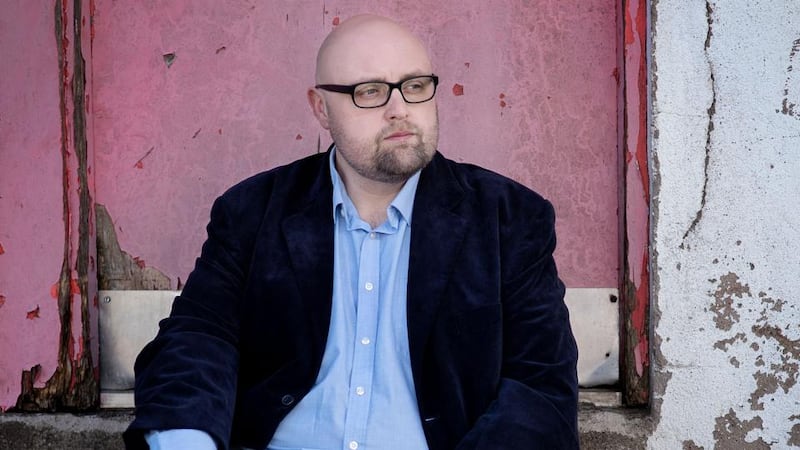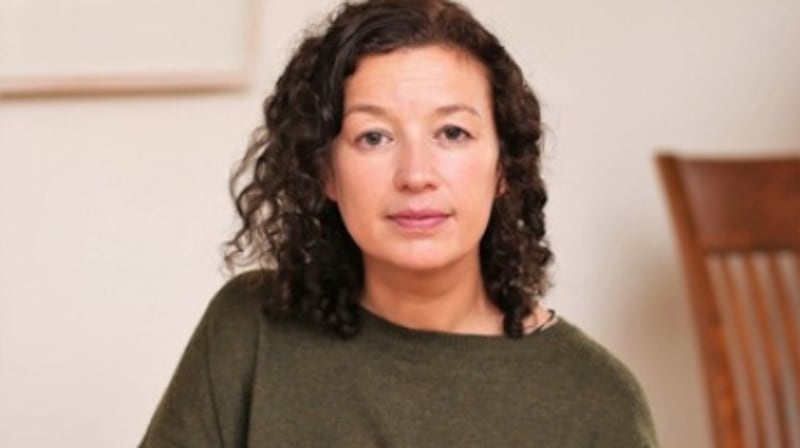June 1st marks the beginning of Crime Reading Month in Ireland, Northern Ireland and Britain. The festival, from the Crime Writers’ Association and directed by Wicklow-based best-selling author Sam Blake, aims to promote and celebrate crime fiction through events in bookshops, libraries, museums, theatres and online. Given there is now a crime subgenre for every appetite, a month-long festival seems appropriate. But are subgenres helpful labels or just marketing tools for publishers? We asked writers for their thoughts.
In her introduction to the anthology Great Short Stories of Detection, Mystery, and Horror, Dorothy L Sayers complained it was impossible to keep track of all the crime fiction being produced in the 1920s.
“Book upon book, magazine upon magazine pour out from the Press, crammed with murders, thefts, arsons, frauds, conspiracies, problems, puzzles, mysteries, thrills, maniacs, crooks, poisoners, forgers, garrotters, police, spies, secret-service men, detectives, until it seems that half the world must be engaged in setting riddles for the other half to solve.”
You’ll be talking to someone and they say ‘I don’t read crime because I’m not into reading about violence’ ... that can be frustrating because crime is far from being exclusively about violence and serial killers
Almost a hundred years on, crime fiction is even more plentiful and has, like a lily of the valley plant, sent out its runners into the literary world, evolving and growing over time. A multitude of subgenres have developed, from inverted detectives and espionage to LGBTQ mysteries, supernatural and romantic suspense, as well as the more well-known procedural, cosy, thriller and noir. Popularity of each subgenre ebbs and flows; cosy crime, for example, has seen a revival, most notably with the success of Richard Osman’s Thursday Murder Club series, while Scandi Noir has begun to wane. But while the labels give an indication of content, do they do justice to what’s inside the covers?
READ MORE
Jane Casey, whose DS Maeve Kerrigan series is sold as police procedural – with an investigating officer as protagonist working to solve a crime –, finds the category off-putting and cold. It doesn’t, for example, capture the strong romantic element in the relationship between Kerrigan and her superior, DI Josh Derwent.
“Everyone is doing something different, even within those little subgenres,” she says. “So it’s interesting to see how people push the boundaries of their particular subgenre and I suppose I’ve pushed it as far as I probably can in the direction of romantic suspense, which is what I like reading myself.” She cites Mary Stewart, a romantic and historical crime fiction author, as influential. In the past, Casey’s had her own books labelled “police thriller”, but found that inadequate because it, too, left out the romantic element.
What might be a perfect subgenre for the Kerrigan books, the most recent of which, The Close, was published in March? She responds while laughing: “Romantic police suspense, but then you’re like, you might as well write the book in that case.”
Might she be tempted into a different subgenre with an amateur protagonist perhaps? No. “The things that most ordinary people run away from, the police run towards,” she says. It would require “too many contrivances to keep the main character involved”.
Two million-selling author Patricia Gibney also finds police procedural, in which her DI Lottie Parker books sit, too narrow a label.
“You’re getting into the psychology of the crime, why it happened, motivations, your following your lead character’s life, so there’s an awful lot more than just police procedural.” Such labels can only act as a guide, she says, but what’s most important at the end of the day is that people are reading books. Her 12th in the series, Three Widows, is available as an ebook, while book nine, Silent Voices, is in bookshops. Ian Rankin’s Rebus novels influenced her taste for officers as central characters. They have more insight into cases, though they do have to follow procedure and think 10 steps ahead about evidence and going to court. So would she be tempted to try a new challenge?
“I’m drawn to psychological thrillers, so I have one germinating in the back of my mind,” she says.

Steve Cavanagh, who is this year’s Crime Reading Month ambassador for Northern Ireland, has no reservations about his Eddie Flynn books being categorised as thrillers. The subgenre is exemplified by a protagonist in a race against time to save someone’s life or save the world, and The Accomplice, lawyer Flynn’s seventh outing, fits comfortably into the brief.
“It’s the genre that I most love to read, particularly American. At an early age I read Silence of the Lambs by Thomas Harris and that got me hooked.” Thrillers encompass lots of different types of novels; “a wide umbrella”, he says. Such labels are helpful for booksellers because they want to know where to put a book on the shelf.
“And if it helps readers who want to read that to find their work, that’s only a good thing.” He’s never been tempted by other subgenres and lists favourite authors as influential including Michael Connolly, Patricia Highsmith, Ross MacDonald, Raymond Chandler and Shari Lapena.
“I’m a product of my reading,” he says.
Andrea Carter, whose central character and amateur sleuth Ben O’Keeffe also works in the law, says her Inishowen Mysteries, set in Donegal, are often labelled cosy crime.

“While they have some of the classic elements – a body at the beginning, an amateur sleuth, a limited cast of suspects and a solution at the end – strictly speaking I don’t think they are cosy. But it doesn’t bother me in the slightest!”
She thinks subgenres may help readers, though doesn’t see them applied that often.
“Usually, all readers need to do is read the blurb on the back of the book to get a flavour of what is inside.”
Her “gateway drug” into crime fiction was Agatha Christie, but PD James remains her favourite. Death Writes, book six in her Inishowen Mysteries, is due for publication in July and Carter has no reservations about having chosen a legal professional as a central character. Although she had experience in law, she had no insider garda knowledge, she says.
“I also liked the idea of the local solicitor as a keeper of secrets, someone who knows things but isn’t allowed to tell.” And an amateur sleuth doesn’t necessarily need to operate within the law. There are challenges, though, to writing a detective from a non-police background. “You need to give them a reason for getting involved in the detection of a crime. Often that reason is a personal connection to the victim or alleged perpetrator, but it’s not a device you can repeat too often. It’s probably why I chose a police-adjacent profession like a lawyer.”
Though “police-adjacent” is not a subgenre, perhaps it should be. It would fit neatly for many amateur sleuths, such as Claire McGowan’s forensic psychologist Paula Maguire. Her six-book series, which backdrops in Northern Ireland and England, is categorised as forensic procedural, a subgenre depicting the work of forensic anthropologists, crime scene investigators, profilers and other specialists.
“I’m not convinced that readers necessarily know all the subgenres that we would use in publishing,” she says. When teaching, she tells students to think of the various labels as marketing terms that don’t necessarily have to affect how they write.
“We hear a lot about ‘this type of crime doesn’t sell any more, this type of crime is really popular’ and I think that’s only true to some extent. I think there’s still room for good books to break through.”
Setting out to write crime, she didn’t consciously choose forensic procedural but had been reading quite a bit about behavioural analysis, including in thrillers of the 1990s such as Silence of the Lambs. And she sought a central character who could be believably involved in different crimes without being a police officer.
“She can do things that police officers couldn’t do,” she says of Paula Maguire. Having finished the series, she has moved on to stand-alone psychological thrillers and her latest, Let Me In, is due out in June.
“I like to read psychological thrillers, so I guess it was quite a natural move,” she says.
For Andrea Mara, who is this year’s Crime Reading Month ambassador for Ireland, it’s always been stand-alone and domestic noir, a subgenre based around families and relationships, and written mainly from a female perspective.
“People know what they’re getting if they care about the subgenre whereas, if they don’t care or don’t know what domestic noir is, it’s no disadvantage to me to have that label. There could be other writers who might feel differently.”
As with all the writers interviewed, she cites early crime favourites as influential. In her case, Ruth Rendell writing as Barbara Vine made a deep impression.
Mara’s latest novel, No One Saw A Thing, stays true to domestic noir, centring on what happens when two small children step on to a tube train leaving their mother behind on the platform. Mara has no appetite, as yet, to experiment with other subgenres, but does view them as helpful in breaking down crime fiction “from what is this overall possibly misleading term”.
“Every now and then you’ll be talking to someone and they say ‘I don’t read crime because I’m not into reading about violence’ or ‘I don’t want to read about serial killers’, and as a writer that can be frustrating because I know that crime is far from being exclusively about violence and serial killers.”
It covers everything from the classics to romance and sci-fi, according to Blake, who singles out Kitty Murphy’s Dublin drag mysteries, with its LGBTQ+ element, and Cork-based Alice Bell’s forthcoming Grave Expectations, which has a supernatural component, for particular mention. The festival is “a fantastic opportunity for writers to reach new readers and for readers to find new writers”, she says.
For further information see crimereading.com.
















